University Physiotherapy Student's Reflective Assignment
VerifiedAdded on 2023/06/10
|5
|702
|77
Journal and Reflective Writing
AI Summary
This assignment is a reflective journal entry by a physiotherapy student detailing their experience conducting a mobility assessment for a patient with a hip replacement. The student, an occupational therapy student, describes their initial anxiety and lack of practical experience, and how they overcame these challenges through communication, seeking guidance from an experienced occupational therapist, and adhering to ethical guidelines. The reflection highlights the importance of professional collaboration, understanding one's limitations, and the need for continuous learning. The student analyzes the experience, identifying strengths and areas for development, and outlines an action plan to gain further practical exposure in conducting different types of assessments. The reflection explicitly links the experience to the Health and Care Professions Council (HCPC) standards of proficiency and the College of Occupational Therapists' Code of Ethics and Professional Conduct, demonstrating a commitment to ethical practice and professional development. The student's reflections underscore the significance of lifelong learning and professional competence within the field of occupational therapy.
1 out of 5
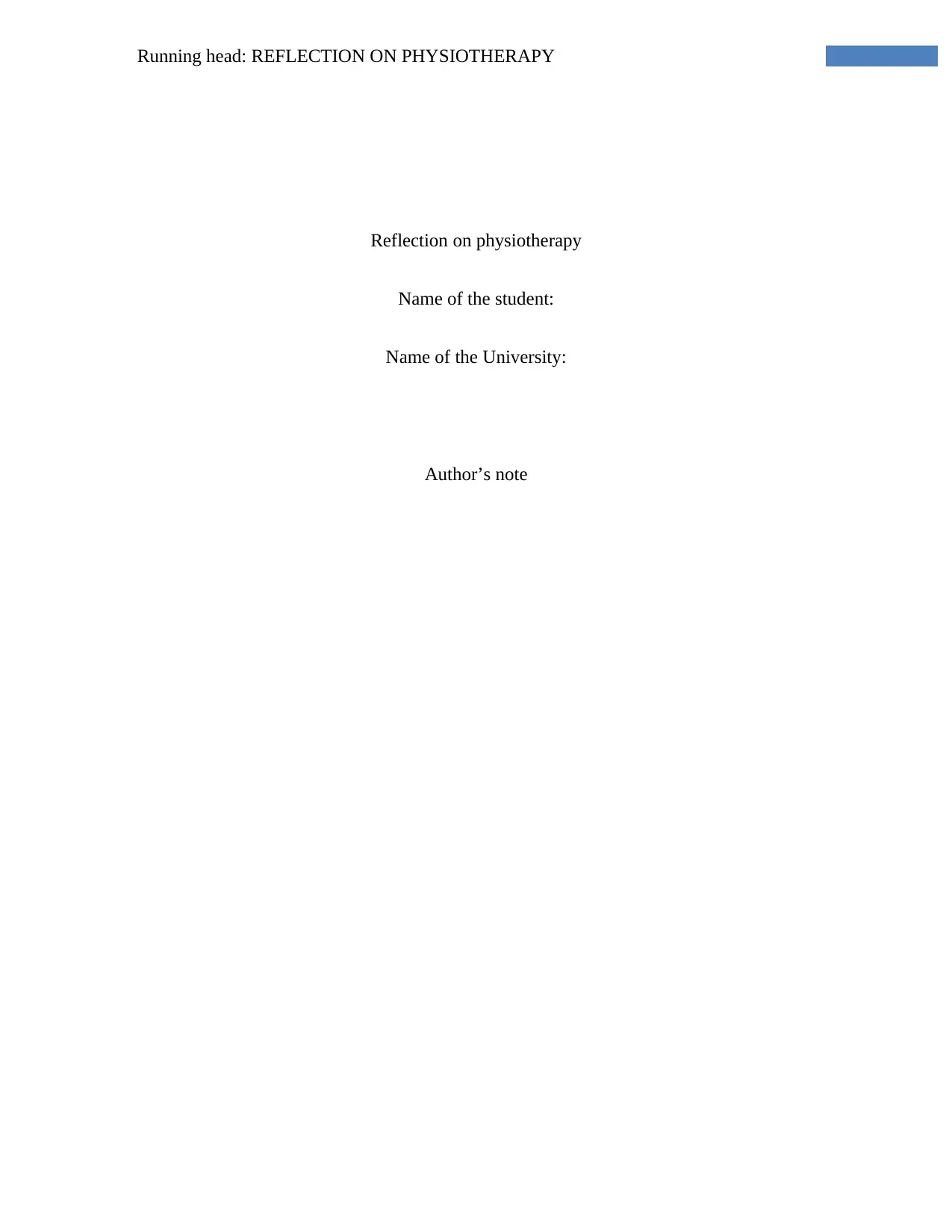
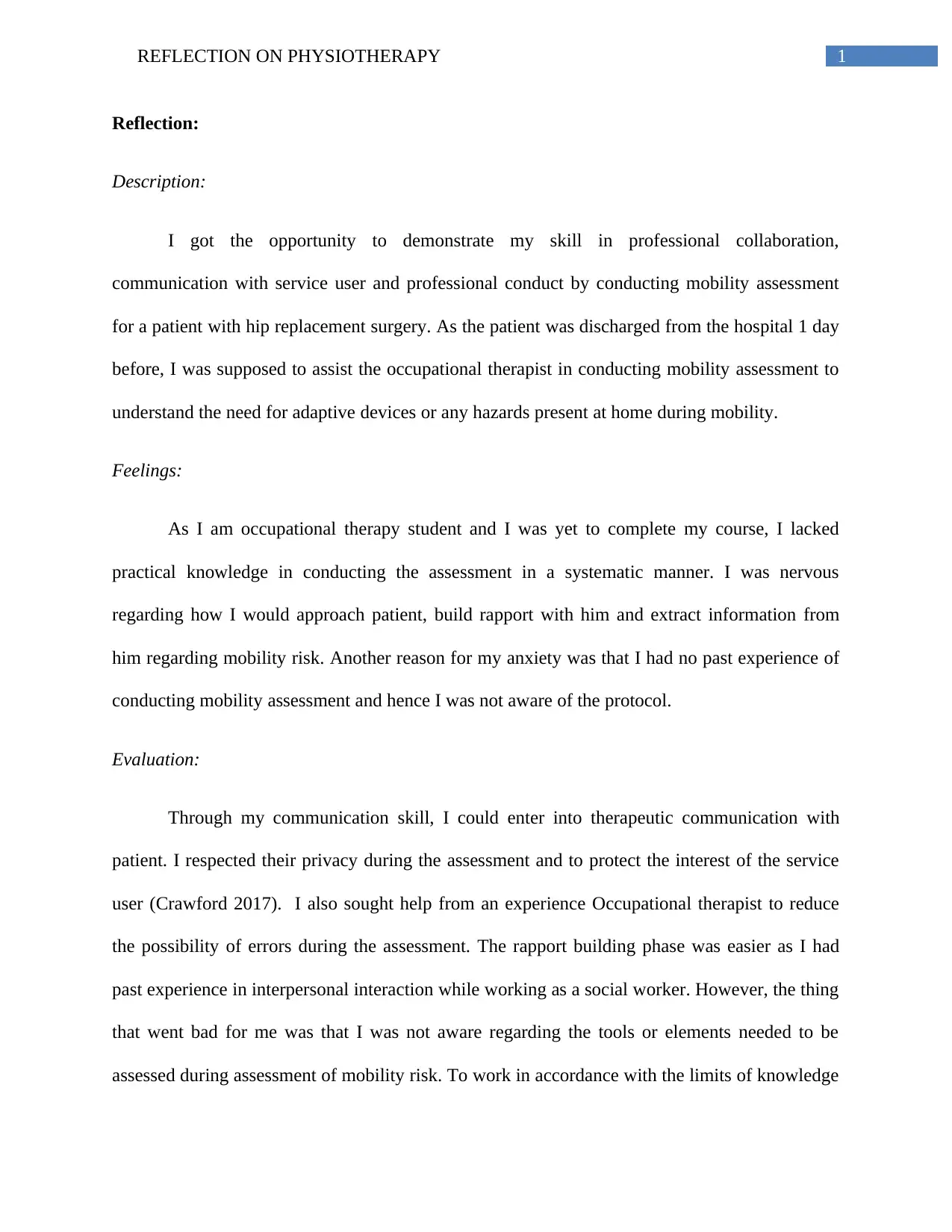
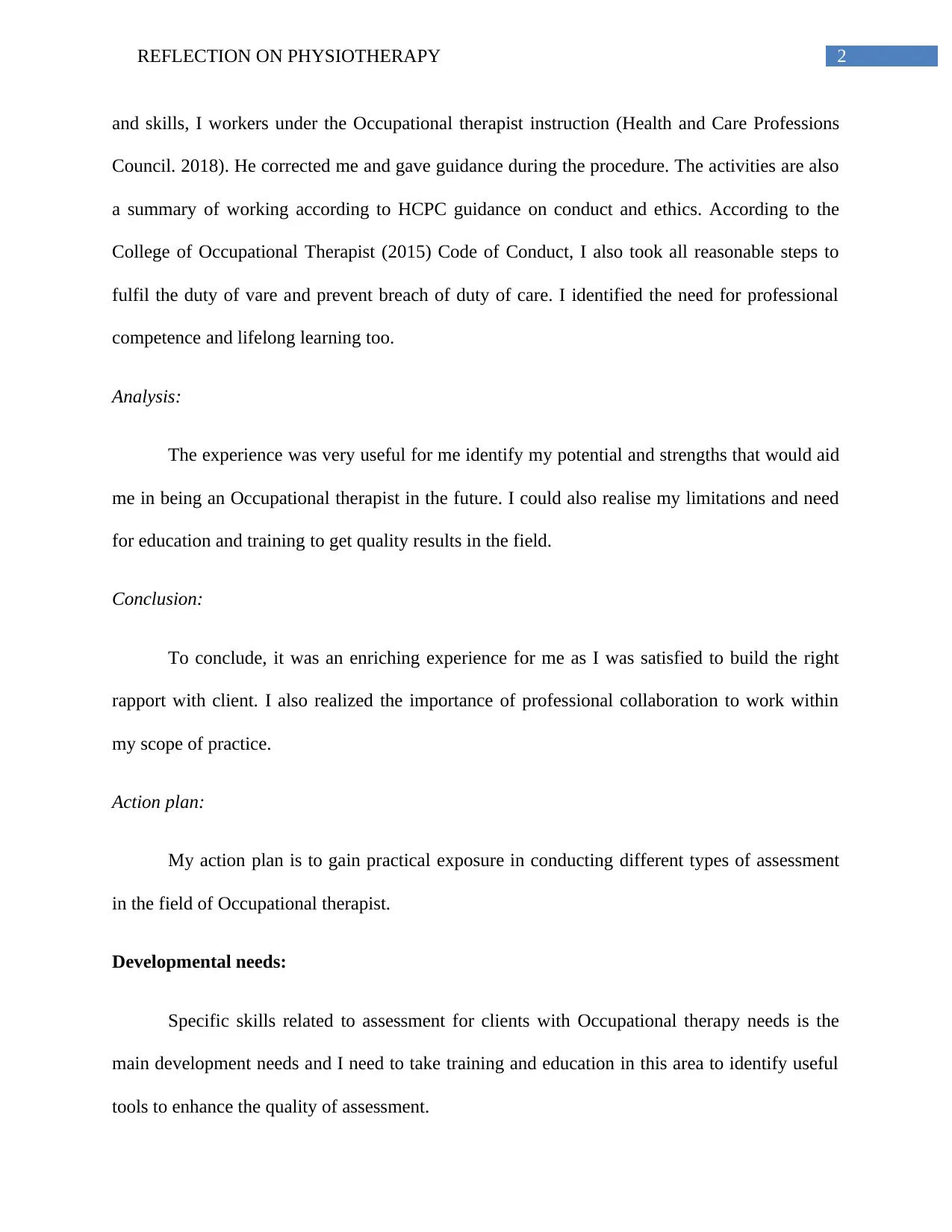

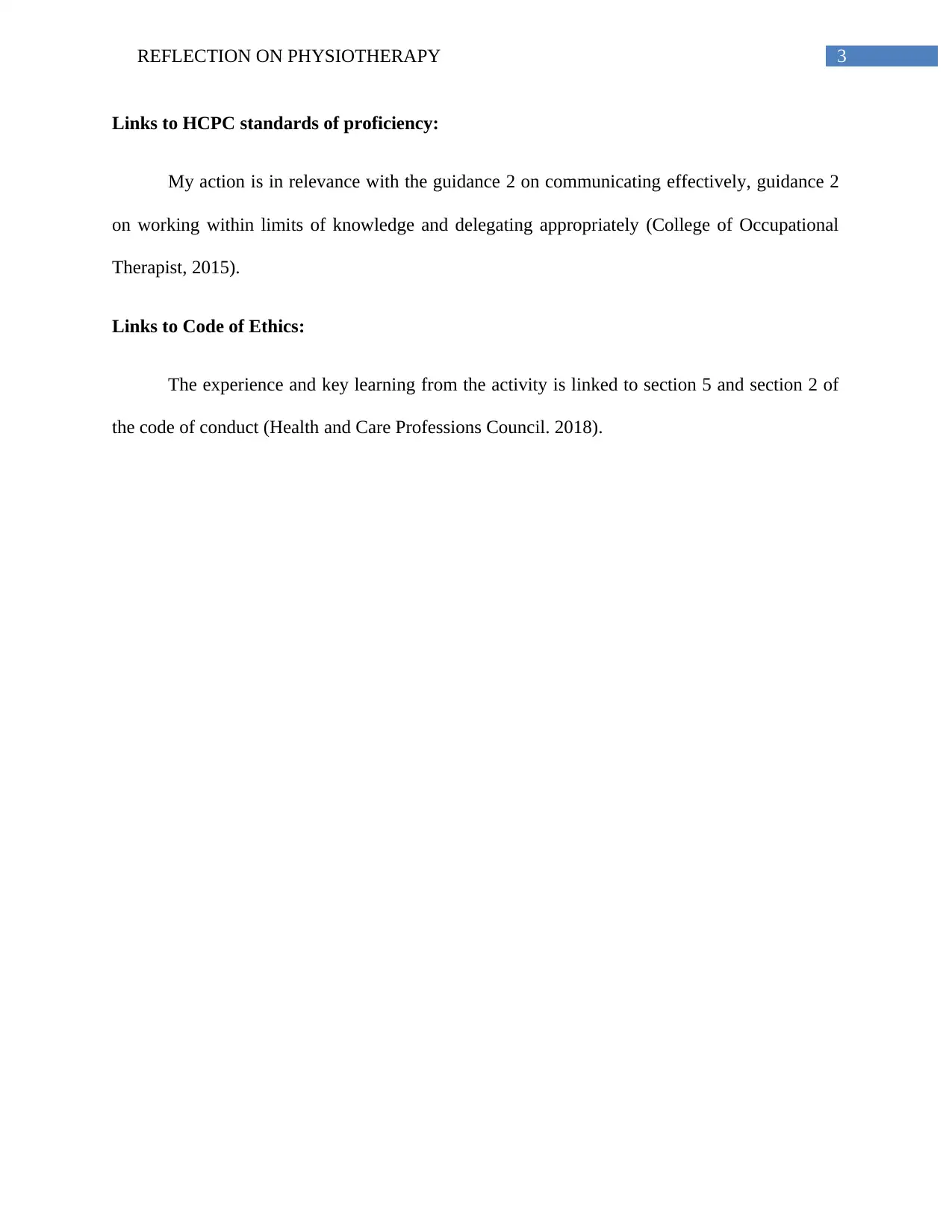
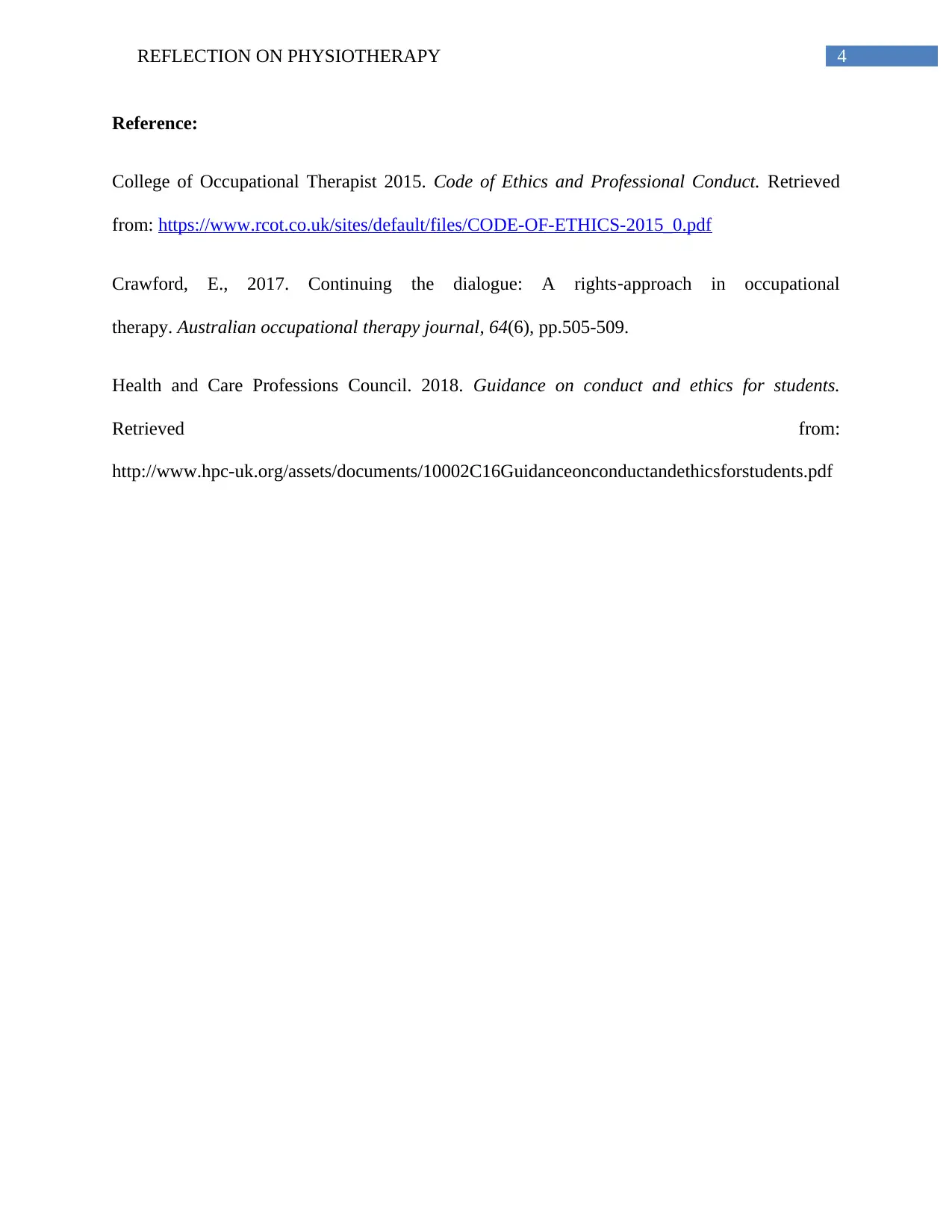





![[object Object]](/_next/static/media/star-bottom.7253800d.svg)